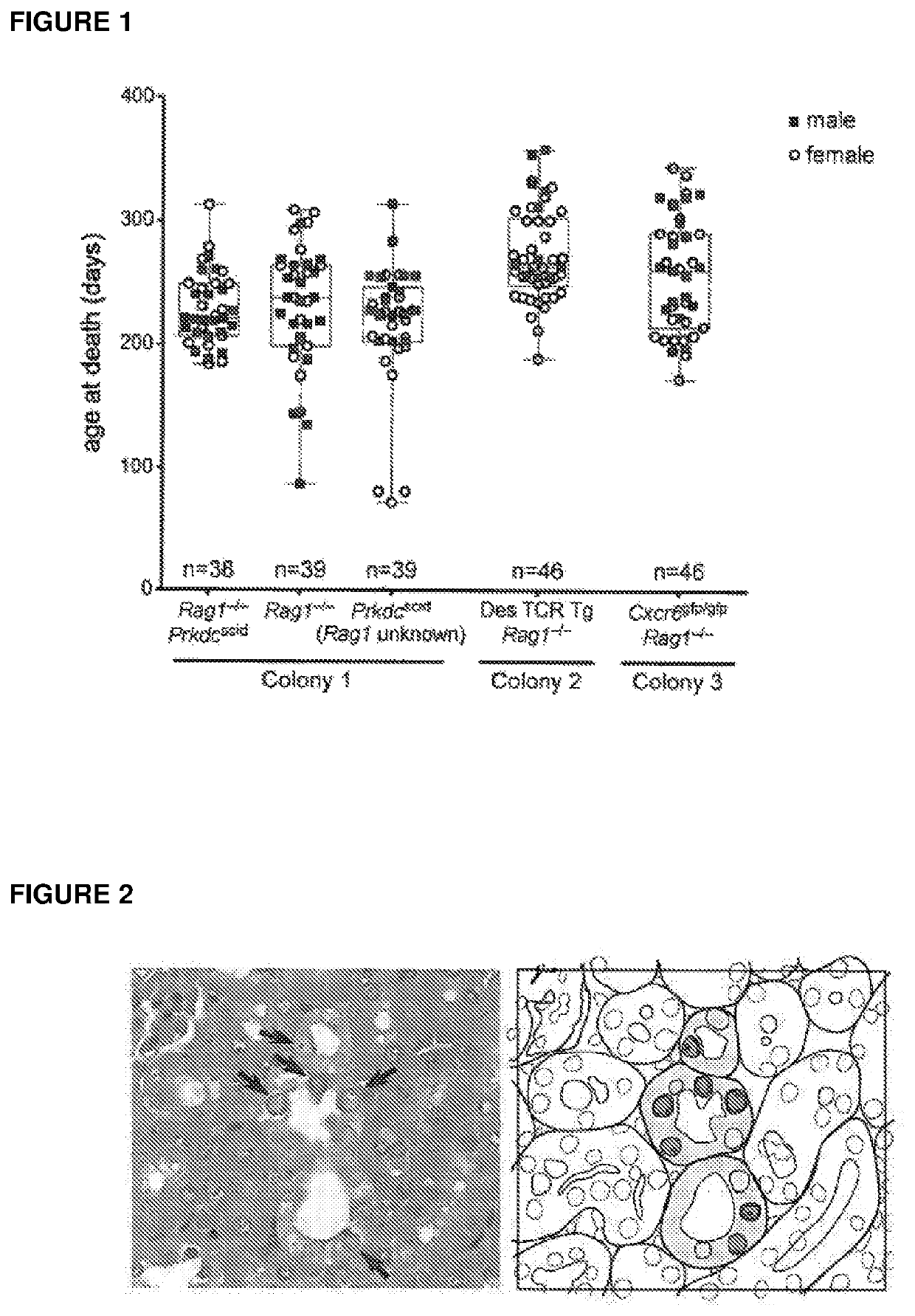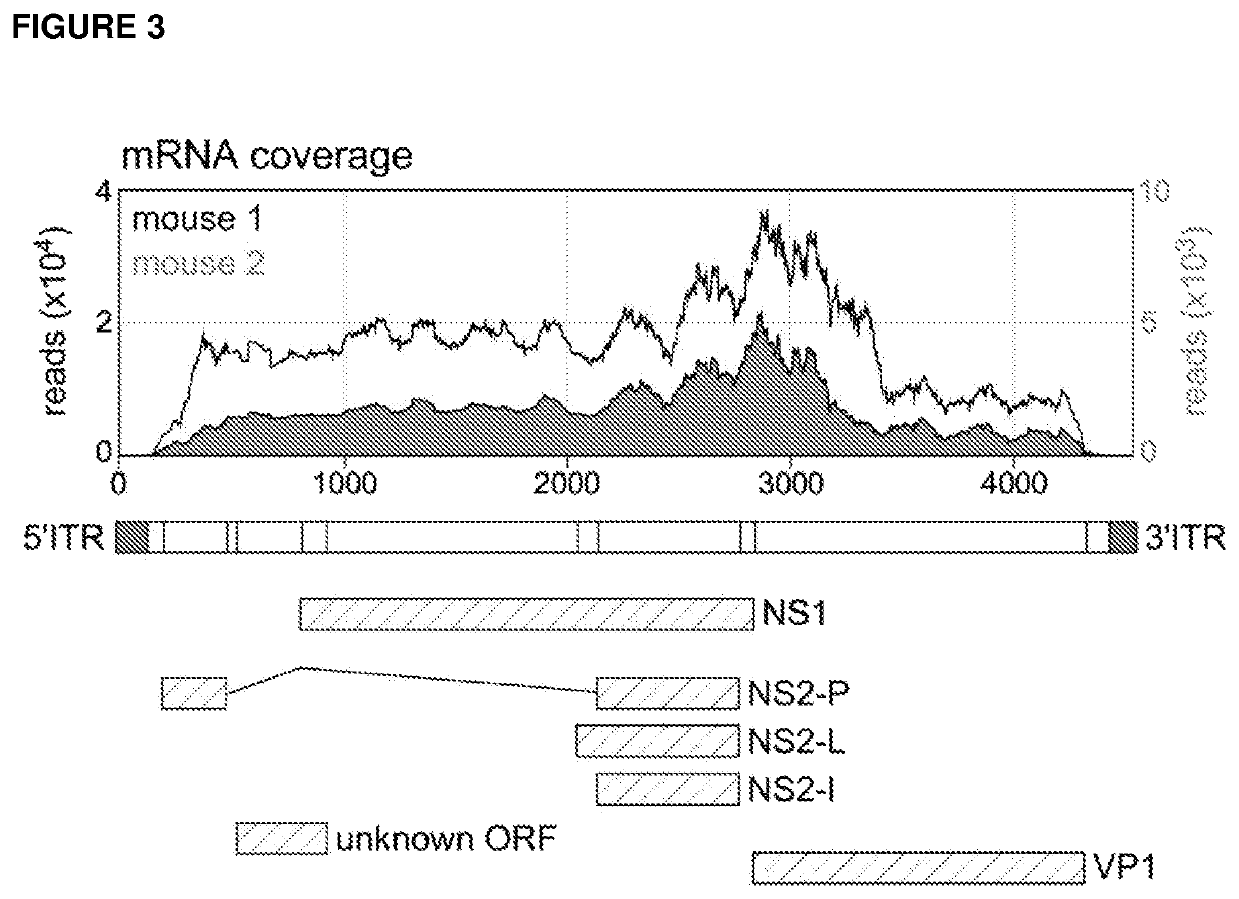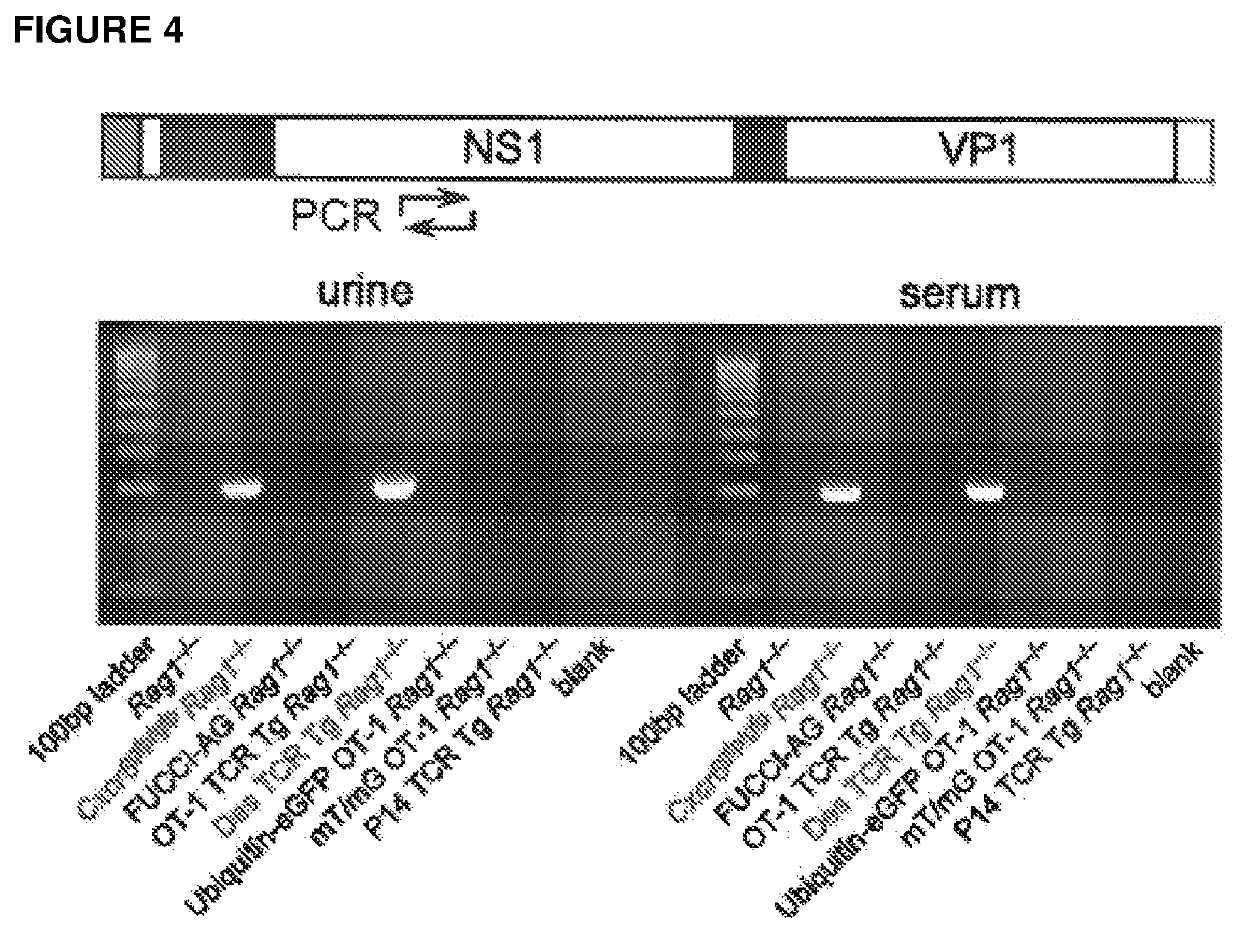Murine parvovirus and uses thereof
a parvovirus and murine technology, applied in the field of new parvovirus, can solve the problems of reactive tissue fibrosis, inability to develop effective interventions for renal fibrosis and failure, and inability to meet the needs of patients,
- Summary
- Abstract
- Description
- Claims
- Application Information
AI Technical Summary
Benefits of technology
Problems solved by technology
Method used
Image
Examples
example 1
ation and Characterization of a Novel Virus, Mouse Kidney Parvovirus (MKPV)
[0150]The inventors observed that middle-aged mice within a number of disparate immunodeficient colonies at their facility unexpectedly died, the likely cause of death being renal failure. The kidneys of moribund mice appeared shrunken, pale and pitted upon necropsy, and highly fibrotic by histology (data not shown). All other tissues from diseased mice appeared morphologically and histologically normal (data not shown). Retrospective analysis of the necropsy records revealed a high penetrance of kidney disease throughout many generations of Rag1− / − and Prkdcscid / scid mice, both of which lack T and B cells, with the age of death usually occurring between 200 and 300 days (FIG. 1), much shorter than the natural lifespan of mice (>500 days).
[0151]Histopathological assessment of affected kidneys identified tubular epithelial cells with enlarged nuclei (karyomegaly) and chromatin clearing associated with the form...
example 2
and Transmissibility of MKPV
[0154]PCR primers specific for the MKPV NS1 gene (SEQ ID NO: 1 and SEQ ID NO: 2) were designed and used to test the serum and urine of a number of immunodeficient mouse lines for the presence of viral DNA. Viral amplicons were detected in mouse colonies in which kidney disease had been observed but was absent from disease-free lines (FIG. 4). Viral DNA was also detected within the faeces of affected mice (data not shown), although no pathological changes within the gastrointestinal tract were observed. PCR amplification also detected MKPV NS1 DNA from the kidneys and urine of disease-affected NOD.Cg-Prkdcscid Il2rgtm1Wjl / SzJ (NSG) mice from the Memorial Sloan Kettering Cancer Center, but not from unaffected mice from MSKCC (data not shown).
[0155]To test for horizontal transmissibility of the virus, MKPV PCR Cxcr6gfp / gfp Rag1− / − mice were co-housed with virus-free Rag1− / − mice obtained from a vendor with no history of kidney disease in their animals. After...
example 3
MKPV
[0156]The sequencing enabled the assembly of a complete 4354 bp parvovirus sequence (SEQ ID NO:3), including the 5′ inverted tandem repeats (ITRs) that form the classic ‘bubble’ stem-loop structures typical of many parvoviruses. Parvoviral ITRs are not normally transcribed, as reflected in the RNA coverage data (FIG. 3), so the identification of the 5′ and 3′ ITRs may have been due to the presence of low level viral DNA contamination.
[0157]Parvoviruses are small, highly diverse single-strand DNA viruses capable of infecting many animal species, including both vertebrates (Parvoviridae) and invertebrates (Desnovirinae). A number of mouse parvoviruses have been identified, all of which exhibit high sequence similarity and belong to the same genus (Protoparvovirus) (Joh et al. (2013) Exp Mol Pathol 95, 32-37). Mouse parvovirus infections are clinically silent in immune-competent animals but can occasionally cause bone marrow anomalies in immunodeficient strains. Amino acid sequence...
PUM
| Property | Measurement | Unit |
|---|---|---|
| temperature | aaaaa | aaaaa |
| concentration | aaaaa | aaaaa |
| wavelength | aaaaa | aaaaa |
Abstract
Description
Claims
Application Information
 Login to View More
Login to View More - R&D
- Intellectual Property
- Life Sciences
- Materials
- Tech Scout
- Unparalleled Data Quality
- Higher Quality Content
- 60% Fewer Hallucinations
Browse by: Latest US Patents, China's latest patents, Technical Efficacy Thesaurus, Application Domain, Technology Topic, Popular Technical Reports.
© 2025 PatSnap. All rights reserved.Legal|Privacy policy|Modern Slavery Act Transparency Statement|Sitemap|About US| Contact US: help@patsnap.com



